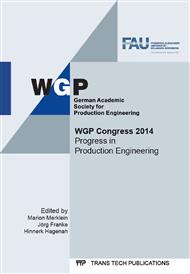p.215
p.223
p.229
p.237
p.245
p.253
p.261
p.269
p.277
Development of a Pneumatic Bulge Test for High Temperatures and Controlled Strain Rates
Abstract:
Due to new material concepts (e.g. boron-manganese steels), hot stamping of sheet metal parts has emerged in order to produce high strength components. Thereby, the design of hot stamping processes by means of finite element simulations requires information about the thermo-mechanical material behaviour up to high strain levels at various temperatures as simulation input. It is known that hot tensile tests are only evaluable until low strain levels. Therefore, a hot gas bulge test for temperatures in the range of 600 °C to 900 °C and strain rates up to 1/s is being developed. In order to design such a hot gas bulge test, the requirements (e.g. forming pressure) are estimated by finite element simulations. The result is a test bench, which already enables a pneumatic forming of specimens at room temperature and pressures up to 200 bar without any unexpected side effects.
Info:
Periodical:
Pages:
245-252
Citation:
Online since:
September 2014
Authors:
Keywords:
Price:
Сopyright:
© 2014 Trans Tech Publications Ltd. All Rights Reserved
Share:
Citation:


